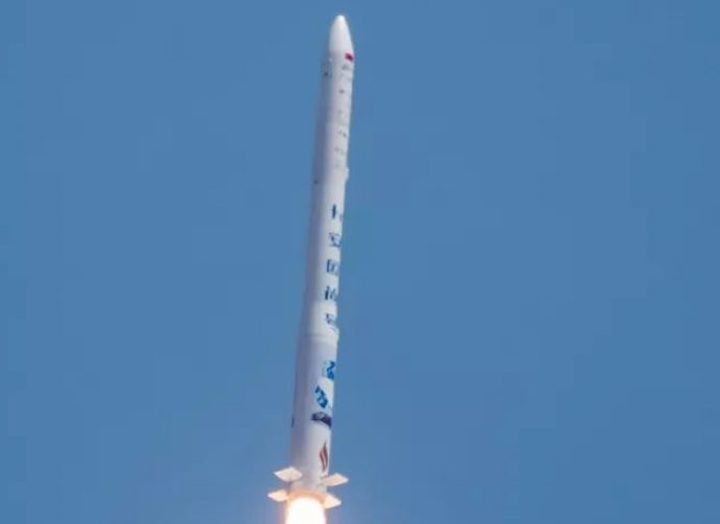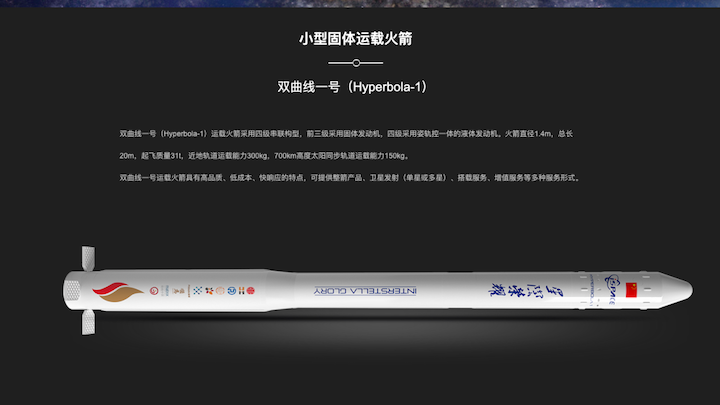25.07.2019

A Chinese private company has successfully launched a carrier rocket for the first time from the Jiuquan Satellite Launch Center in northwest China at 1 p.m. Thursday.
China’s answer to SpaceX achieved the country’s first private commercial rocket launch
The launch marks a new milestone in the country’s commercial space transportation.
iSpace—a Beijing-based private rocket company and China’s answer to SpaceX—said it has successfully launched its prototype “SQX-1 Y1” solid rocket from Jiuquan Satellite Launch Center, at around 1:10 pm Beijing Time today.
The event marked the first successful rocket launch into the orbit by a private Chinese company. The “SQX-1 Y1” is also the most powerful rocket ever developed by a private Chinese company.
The “SQX-1 Y1” rocket, also known as “Hyperbola-1”, weighs 31 tonnes and has three solid-propellant stages and fourth liquid-propellant stage. At full capacity, it could carry a payload of 260 kg in orbits of 500 km, according to The Paper.
The launch sent two satellites—from the China Aerospace Science & Industry Corporation and the Beijing Institute of Technology —and several other loads into the orbits of 300 km.
Two other Chinese companies, LandSpace and OneSpace, failed in their previous attempts at launching their rockets.
iSpace was founded in October 2016 and now has a team of about 120 staff. It closed an undisclosed early-stage Series A round funding in June with support from companies like CDH Investment, Matrix Partners China and Shunwei Capital.
Quelle: KrASIA
+++
A private Chinese space firm successfully launched a rocket into orbit

After two Chinese private companies failed to launch a rocket into orbit, the third attempt has been successful.
Beijing-based Interstellar Glory Space Technology (also known as iSpace) launched a rocket into orbit today (July 25) around 1:10 pm local time from Jiuquan, a state launch facility in the Gobi desert, a company spokesperson told Quartz. That made it the first private Chinese space company to launch a rocket into orbit—an essential step in the commercialization of applications such as transporting satellites.
The three-year-old firm launched a 20-meter-tall (65 feet) rocket called Hyperbola-1. It weighs 31 metric tons (34 tons), and consists of three solid-propellant stages and a fourth liquid-propellant stage. It’s designed to have a payload of 300 kilograms (660 lbs) in low-earth orbit, and 150 kg (330 lbs) in orbits of 700 kilometers (430 miles), according to the company (link in Chinese).
LandSpace and OneSpace, two other private companies, failed to launch a rocket into orbit in October and March, respectively. The failure of those launches is creating uncertainty over China’s private space industry, as multiple companies compete to enter the launch market for small commercial satellites. The government called for private investment in the sector in 2014, but so far no company has been able to launch a rocket into orbit.
It’s unclear how much it cost for iSpace to build the rocket. Chinese state-owned automaker Changan’s passenger car brand Oushang said it would sponsor the launch, but didn’t specify the amount. In OneSpace’s case, the firm’s nine-meter-tall, solid-propellent rocket cost the company $78 million to design, build, and launch. iSpace’s main private backers (link in Chinese) include domestic private-equity firms CDH Investments and Matrix Partners.
iSpace didn’t immediately respond to requests for comment.
But private space companies are also getting state support in China. All of the private launches so far, for example, have taken place at Jiuquan—Elon Musk’s SpaceX recently launched a rocket at NASA’s Kennedy Space Center, while its main customer is the US Air Force. What’s different in China is the constraints that come with having state backing. In June, China rolled out a set of rules that restrict what private companies can develop and manufacture. It’s unclear if that may restrict private companies’ capabilities in building larger rockets that could rival state rocket builders.
Quelle: QUARTZ

